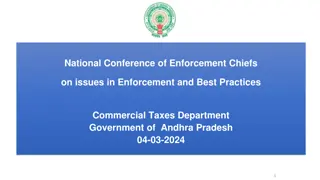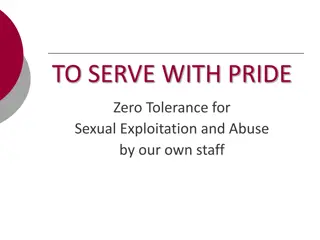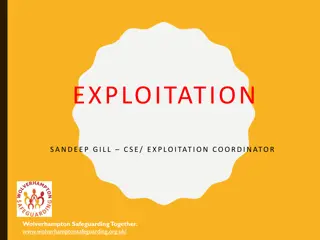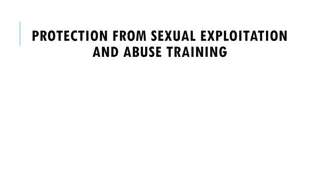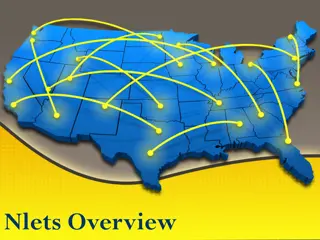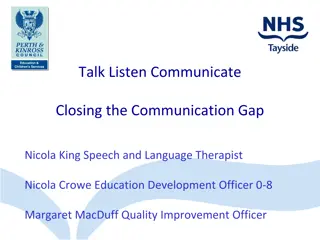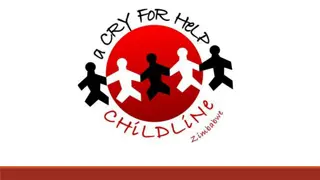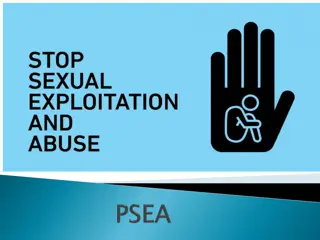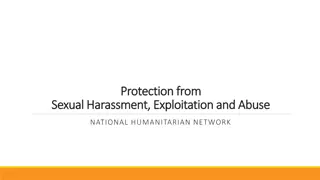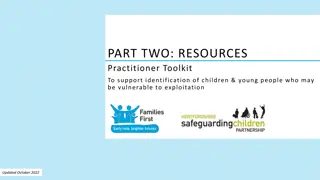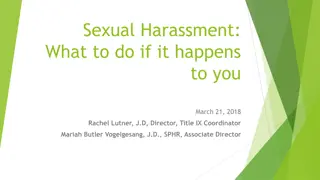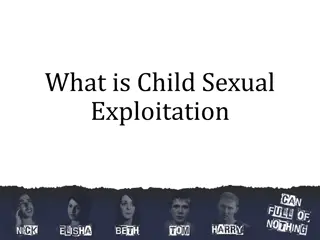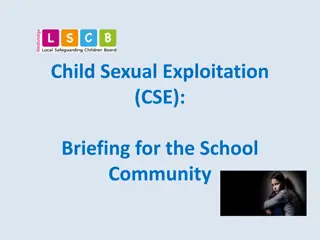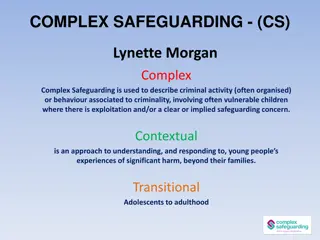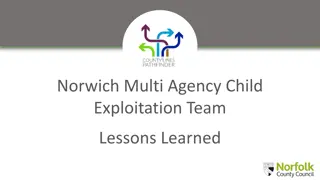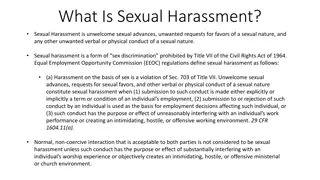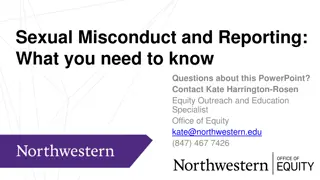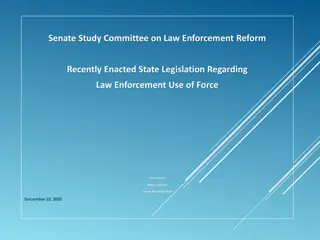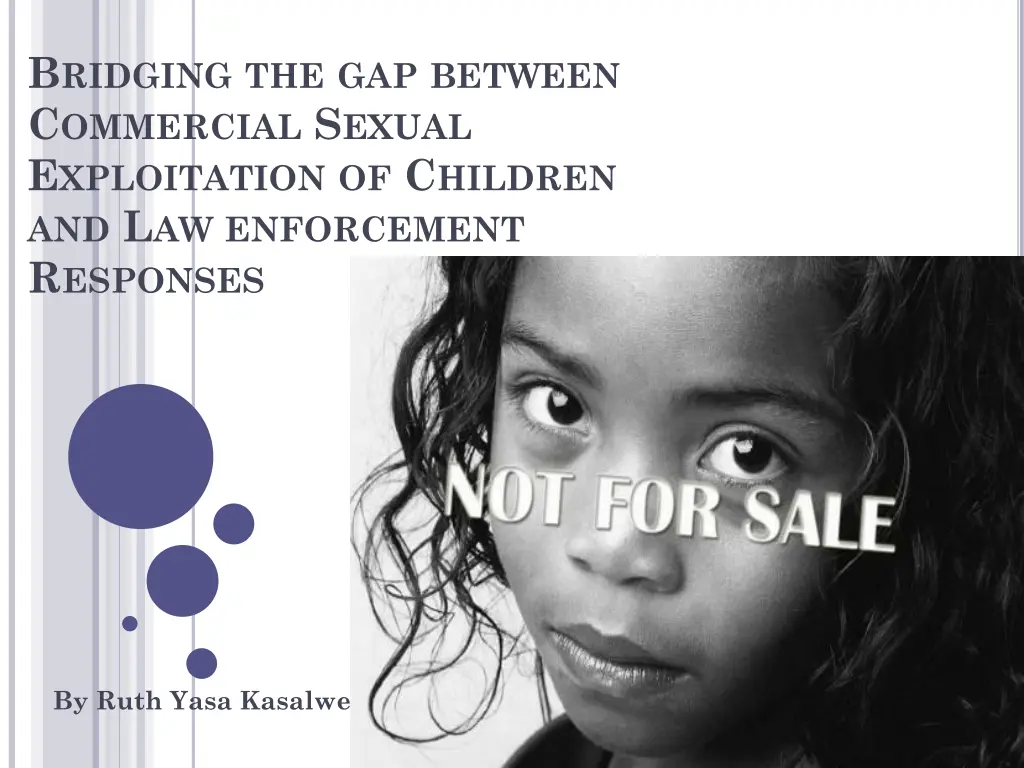
Bridging the Gap: Commercial Sexual Exploitation of Children in Atlanta
This research paper delves into the issue of Commercial Sexual Exploitation of Children (CSEC) in Atlanta, exploring its prevalence, root causes, and the urgent need for improved law enforcement responses. The study reveals shocking statistics and sheds light on the risk factors and demographics of victims, emphasizing the crucial role of tackling this heinous crime.
Download Presentation

Please find below an Image/Link to download the presentation.
The content on the website is provided AS IS for your information and personal use only. It may not be sold, licensed, or shared on other websites without obtaining consent from the author. If you encounter any issues during the download, it is possible that the publisher has removed the file from their server.
You are allowed to download the files provided on this website for personal or commercial use, subject to the condition that they are used lawfully. All files are the property of their respective owners.
The content on the website is provided AS IS for your information and personal use only. It may not be sold, licensed, or shared on other websites without obtaining consent from the author.
E N D
Presentation Transcript
BRIDGING THE GAP BETWEEN COMMERCIAL SEXUAL EXPLOITATION OF CHILDREN AND LAW ENFORCEMENT RESPONSES By Ruth Yasa Kasalwe
INTRODUCTION Commercial Sexual Exploitation of Children (CSEC) UN definition of CSEC CSEC in Atlanta This paper will attempt to answer two main questions: (1) Why is Metro Atlanta a hotspot for CSEC? (2) How can local law enforcement better respond to CSEC?
GEORGIA DEMAND STUDY Decoy ads on Craigslist Callers given 3 graduated warnings about girl s age 47% wanted to continue with the transaction despite three warnings about the girl s age Ads featuring adolescent females got 3 times more transactions per ads
GEORGIA DEMAND STUDY estimated 7,200 men knowingly or unknowingly pay for sex with adolescent females in Georgia each month (Georgia Demand Study,2010) Nearly 28,000 per year;10,000 numerous times per year (GDS) 400 girls are commercially sexually exploited in Georgia each month (GDS) 12 and 14 years old on average(GDS)
GEORGIA DEMAND STUDY 42% of men who purchase sex with young females found in the north metro Atlanta are ,outside I-285.(GDS) 44% of men aged between 30-39 (GDS) one out of every three teens will be lured into sexual exploitation within 48 hours of leaving home (GDS) 90% of exploited children are under the control of a pimp. (GDS)
CSEC VICTIMS Gender 68% female Male and transgender youth also at risk Males less likely to work with pimps Attributed greater sense of agency
CSEC VICTIMS Geography Associated with urban areas Victims from rural and suburban areas Recent increase in recruitment of victims from shopping malls and schools in suburbs
CSEC RISK FACTORS Earlier childhood sexual abuse Homelessness Running Away Inadequate supervision or care Inadequate food, clothing and shelter Family and/or community history of exploitation Exposure to domestic violence in the home
LITERATURE REVIEW Dysart (2013)- aggressive approach towards domestic minor sex trafficking within the U.S Moser (2012) -focuses on the Victims of Trafficking and Violence Prevention Act (TVPA) implemented by the U.S. in 2000 Halter (2010) - factors that influence police conceptualizations of girls involved in prostitution in 6 U.S cities. Todres (2010)- more proactive approaches by law enforcement to get rid of CSEC Boxil & Richardson (2007)-why Atlanta is a hotspot for CSEC; impact of community coalitions on CSEC
LITERATURE REVIEW Hepburn & Simon (2010)- look at human trafficking in the United States Gozdziak(2010)- discusses how the vague nature of CSEC can be problematic to combat the problem. Rand (2009) - discusses the issue of CSEC in the U.S; barriers to effectively combat CSEC Iton, Oliver & Orgensen (2005) prevention and control of sexual exploitation of children and teens Barnitz (2001) coordinated local and global response to end CSEC; role of law enforcement is crucial in stopping CSEC
METHODOLOGY Data for this study will be collected from metro Atlanta law enforcement agencies Organizations dealing with CSEC such as Juvenile Justice Fund, Youth Spark, Atlanta Women s Foundation and the Atlanta Governor s Office of Children and Families Other secondary sources ,reports
METHODOLOGY Interviews with 8-10 representatives of law enforcement agencies and organizations dealing with CSEC 5 police chiefs/relevant person in the Metro Atlanta area (Cobb, Gwinnett, Fulton , DeKalb and Cherokee) 3-5 representatives of organizations dealing with CSEC Find out the extent of the crime Data available ,resources used Strengths and weaknesses in responses to CSEC
WHY IS METRO ATLANTA A HOTSPOT FOR CSEC? Atlanta is among 14 cities with the highest incidence of prostituted children (FBI ,2005) city is a transit point for most travelers as well as people flying in and out for business International airport and major roadways hosting of conventions and sporting events prevalence of adult clubs in the city
LEGISLATION Victims of Trafficking and Violence Prevention Act (TVPA) implemented by the U.S. in 2000 April 2011, HB 200 was passed by the Georgia legislature HB 141: Human Trafficking Hotline Number Posting (effective July 1,2013) HB 156: Keeping Children Safe From Online Predators (effective July 1, 2013) Georgia has some of the nation s harshest punishments for CSEC
RESPONSES FROM LAW ENFORCEMENT CSEC is a challenging crime Law enforcement tend to be more reactive than proactive CSEC victims seen as prostitutes/delinquents Public funding/resources may limit scope of law enforcement responses Lack of knowledge/information on CSEC
BRIDGING THE GAP Proactively identify and investigate CSEC related crimes Task forces & resource allocation Educational training on CSEC Collaborations with other agencies and organizations Assess/address immediate medical/protection needs of victims
BRIDGING THE GAP Properly identify juveniles and runaways Attempt to apprehend exploiters Interview victims Offer and refer victim advocacy to CSEC
REFERENCES "A Future. Not A Past. Stop the Prostitution of Children in Georgia." afuturenotapast.org. N.p., 2011. Web. 25 Oct 2013. <http://afuturenotapast.org/resources/the-facts/>. "United Nations ESCAP HRD Section." United Nations, n.d. Web. 20 Oct 2013. <http://www.escap-hrd.org/csec2.htm>. Barnitz, L. (2001). Effectively Responding to the Commercial Sexual Exploitation of Children: A Comprehensive Approach to Prevention, Protection, and Reintergration Services. Child Welfare, 80(5), 597-610. Boxill,N.A., & Richardson,D.J.,(2007). Ending Sex Trafficking of Children in Atlanta.Affilia 22:138 Dysart, T. L. (2013). The Protected Innocence Initiative: Building Protective State Law Regimes For America's Sex-Trafficked Children. Columbia Human Rights Law Review, 44(3), 619-695. Go dziak, E. M. (2008, Fall2008). On Challenges, Dilemmas, and Opportunities in Studying Trafficked Children. Anthropological Quarterly. pp. 903-923. Guzman, J. Alameda County District Attorney, (n.d.). Draft Protocol Recommendations For A CSEC Coordinated System Response In Both Alameda County And Bay Area Region Halter,S.,(2010).Factors That Influence Police Conceptualizations of Girls Involved in Prostitution in Six U.S. Cities: Child Sexual Exploitation Victims or Delinquents? Child Maltreatment 15(2),152-160 Hepburn, S., & Simon, R. (2010). Hidden in Plain Sight: Human Trafficking in the United States. Gender Issues, 27(1/2), 1-26. doi:10.1007/s12147-010-9087-7
REFERENCES Iton, A., Oliver, M., & Torgensen, K. (2005). Preventing sexual exploitation of children and teens. The Journal Of Law, Medicine & Ethics: A Journal Of The American Society Of Law, Medicine & Ethics, 33(4 Suppl), 38-39. Mitchell ,K.J., Jones, L.M., Finkelhor, D., & Wolak,J.(2011) Internet-Facilitated Commercial Sexual Exploitation of Children: Findings From a Nationally RepresentativeSample of Law Enforcement Agencies in the United States. Sex Abuse:A Journal of Research and Treatment 23:43 Moser, K.(2012). Prevention, Prosecution, and Protection: A Look at the United States' Trafficking Victims Protection Act. International Journal of Business & Social Science.3(6), p222-235 Rand, A. (2009). It Can't Happen in My Backyard: The Commercial Sexual Exploitation of Girls in the United States. Child & Youth Services, 31(3/4), 138-156. doi:10.1080/0145935X.2009.524480 Todres, J. (2012). Assessing Public Health Strategies for Advancing Child Protection: Human Trafficking As A Case Study. Journal Of Law And Policy, 2193. Todres, J. (2010). Taking Prevention Seriously: Developing a Comprehensive Response to Child Trafficking and Sexual Exploitation. Vanderbilt Journal of Transnational Law, 43(1), 1-56.

